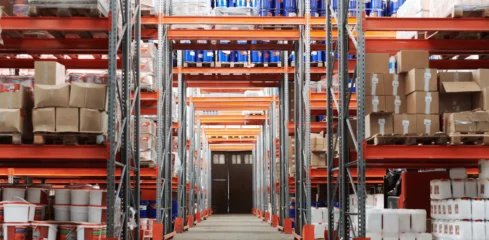

Many customers may disregard packing slips as soon as they open their packages. Yet, these pieces of paper are essential to many e-commerce businesses in various industries. Packing slips contain much information that helps businesses and customers evaluate what a package contains, reducing packing mistakes and improving communication between buyer and seller.
While the availability of digital order receipts and purchase histories make packing slips less vital in an increasingly technology-focused world, many e-commerce businesses still require packing slips for products they’re shipping. Packing slips help companies fulfill orders more quickly and accurately and may be used to verify package contents, making the shipping process more accurate.
What Is a Packing Slip?
A packing slip is a document typically included inside a package that contains an itemized list of the products inside. Packing slips are an inventory packing list to help warehouse workers and customers determine what the box should contain.
Packing slips are often printed on simple sheets of paper and go inside the box along with the products in the order. Depending on the order in question, packing slips may contain the information for a single order or a batch.
These slips of paper play a crucial role in most e-commerce operations. Nearly every step of the shipping process uses packing slips:
- Product picking: The shipping department prints packing slips during the product picking stage to ensure the correct items go into the package. The barcode pick and pack method, one of the best order picking methods for warehouses, uses packing slips to separate picked items into the correct boxes for order fulfillment.
- Order verification: The receiving department uses packing slips for order verification. Workers will check the contents of the box against the packing slip to check for discrepancies before sending the package for shipping.
- Business owners: The information on packing slips alerts business owners of the descriptions of items within the box so they can apply the appropriate shipping rates.
- Shipping handlers: Packing slips tell shipping handlers important information about handling each package to prevent damaging the items inside.
- Customers: Once a package arrives, customers can look at the packing slip to verify whether their order was correct.


What Should Packing Slips Include?
Packing slips provide several kinds of information to help businesses pack orders correctly. Although the exact type of information on a packing slip varies between companies and products, you’ll typically find the following details:
1. Buyer and Order Information
Packing slips include several details about the purchaser and the order, including:
- The buyer’s name and shipping address
- The order date
- The buyer’s contact information
2. List of Items in the Package
Packing slips contain a list of the products in the order, including the type and descriptions of each product and other details like color and style. A packing slip may also include a list of the items shipped separately.
3. Quantities of Products
Buyers may purchase multiple products of the same type. In this case, including the quantities next to each item prevents the packing slip from being several pages long. Warehouse employees reference the number of each product type to include while they pack boxes for shipping.
4. Product Weight
Packing slips identify the general dimensions and weight of the products inside the box. Knowing the weight of the package helps businesses identify the correct shipping rates.
5. SKU or UPC
Businesses manage their inventory using unique identifying codes assigned to each product. These codes could be stock-keeping unit (SKU) numbers, universal product codes (UPCs) or quick response (QR) codes. Many e-commerce businesses print barcode labels on their packing slips to help with inventory management.
Is a Packing Slip the Same as a Shipping Label?
Warehouse workers could confuse packing slips with shipping labels, yet these are separate documents that serve different purposes. Here are a few differences between the two types of documents:
- Intended purpose: Packing labels direct warehouse workers on the correct items in an order and clarify package contents to the customer. A shipping label’s role is primarily in shipping, where carriers use them to track and ship packages. Businesses also use shipping labels in inventory management.
- Location: Businesses always place shipping labels on the outside of the packages to ensure carriers can read and scan the information. In contrast, packing slips go inside the boxes.
- Information: Both types of documentation include the buyer’s name and address, the package’s weight and the business name and address. However, shipping labels don’t have details about the items in the order and instead display the shipping date, priority and delivery instructions.


What Is the Difference Between a Packing Slip and an Invoice?
Another type of documentation that workers could confuse for a packing slip is the invoice, which also serves a different purpose and includes other details. Invoices are financial documents that keep customers accountable for the terms of payment. When comparing a packing slip vs. an invoice, the differences include:
- Intended purpose: Whereas packing slips are intended for the warehouse workers and recipient of the package, invoices are for the purchaser of the order. In many cases, the purchaser and recipient are two different people.
- Information: Invoices include several details that packing slips don’t, such as the cost of each product, payment method and date of purchase.
- Stage of the ordering process: Customers trigger the creation of invoices when they make a purchase on the e-commerce platform. The warehouse creates a packing slip when it uses its order fulfillment technology to start the packing process.
Why Are Packing Slips Important?
E-commerce businesses gain several benefits from creating packing slips in their shipping process. This documentation helps companies connect purchases in the digital space to physical products and customers. Packing slips are important because they:
1. Ensure Order Correctness
Customers ordering from e-commerce businesses cannot personally ensure they receive the correct items. Incorrect orders can be costly for companies handling returns and possible refunds. Packing slips improve the process of order fulfillment by giving warehouse workers and customers a blueprint for what packages should include. Employees and customers can check packing slips to ensure every order contains the right items.
2. Improve Order Tracking
Businesses sometimes ship items in separate packages, depending on the location of each item in different warehouses or the size of the products. Packing slips allow employees to track multiple products within an order.
3. Identify Damaged Products
Packing slips are also helpful when sorting out damaged items in a shipment. Businesses can use packing slips to resend packages or issue refunds more quickly.
4. Increase Customer Satisfaction
Packing slips demonstrate that your business cares about accuracy in order fulfillment. Customers who receive the correct items in their order are more likely to be satisfied with your business and may order again.


Manage Your Order Fulfillment With Finale Inventory
Packing slips can help your business fulfill orders properly, which is essential for maintaining efficiency in your daily operations. Finale Inventory is a cloud-based inventory management solution that helps growing e-commerce businesses simplify order tracking, fulfillment, stock replenishing and more to work more efficiently.
Finale Inventory works alongside your warehouse documentation to improve visibility into package movement while saving costs. Our personalized approach enables our experienced domain experts to craft a solution that meets your specific business needs. Schedule a demo today to see Finale Inventory at work!






